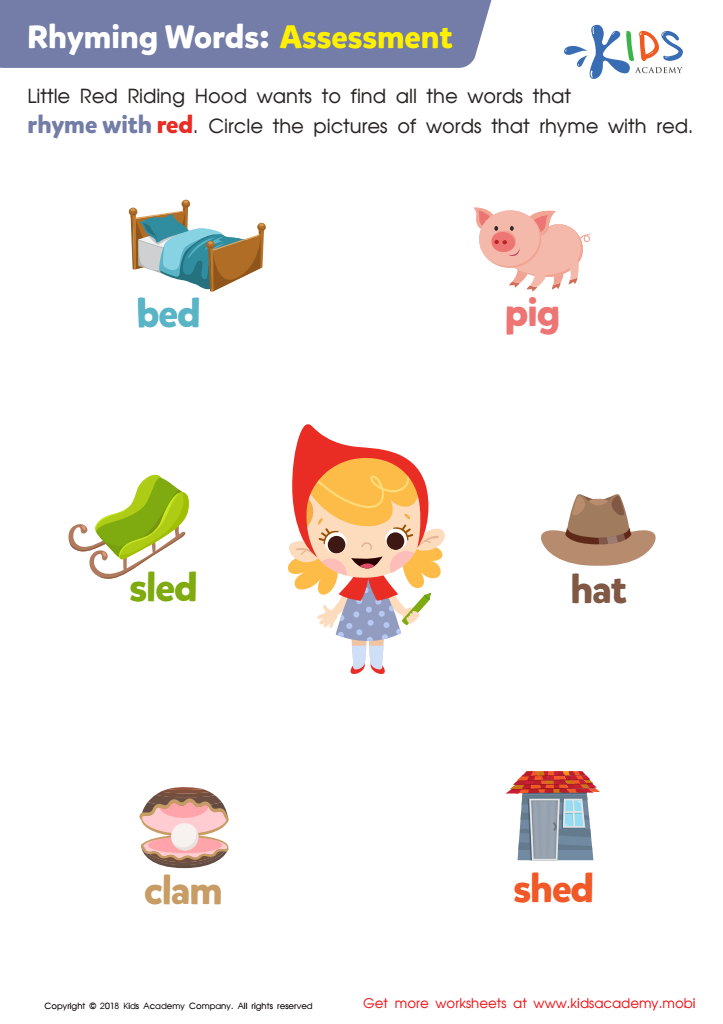Normal Rhyming worksheets activities for Ages 5-6
1 filtered results
-
From - To


Rhyming Words: Assessment Worksheet
Normal Rhyming worksheets activities stand out as an invaluable tool in the realm of early literacy and language development. These activities are specifically designed to engage young learners in the playful yet educational exploration of sounds, which is a cornerstone of phonemic awareness. This foundational skill is critical for children as they embark on the journey of reading, writing, and effective communication. Here's why these activities are so beneficial:
Firstly, Normal Rhyming worksheets activities foster phonological awareness. By distinguishing rhyming words and sounds, children develop an acute awareness of phonemes, the smallest units of sound that can differentiate meaning. This awareness is a strong predictor of future reading success, as it enhances the child's ability to decode words and understand their structure.
Secondly, these activities are incredibly versatile, catering to a range of learning styles. Whether a child learns best through visual cues, auditory stimulation, or tactile activities, rhyming worksheets can be adapted to meet their needs. This inclusivity ensures that every child has the opportunity to benefit from the joys and challenges of rhyming.
Moreover, Normal Rhyming worksheets activities also promote vocabulary expansion. As children encounter and engage with different words that rhyme, they are exposed to new vocabulary. This not only enhances their language skills but also encourages curiosity about words and their meanings, fostering a lifelong love for reading and learning.
Additionally, these worksheets offer a fun and engaging way to practice critical thinking and problem-solving skills. As children identify patterns in sounds and predict which words will rhyme, they are developing important cognitive skills that will benefit them across all areas of learning.
In conclusion, Normal Rhyming worksheets activities are more than just a playful exercise in language arts. They are a comprehensive educational tool that supports early literacy, fosters cognitive development, and nurtures a love for learning. By integrating these activities into the learning curriculum, educators and parents can provide children with a strong foundation for academic success and effective communication.

 Assign to the classroom
Assign to the classroom












